![]()
![]()
Directed by Alex Mallis + Lily Henderson, Cinematography by Ed David, Edited by Lily Henderson + Alex Mallis



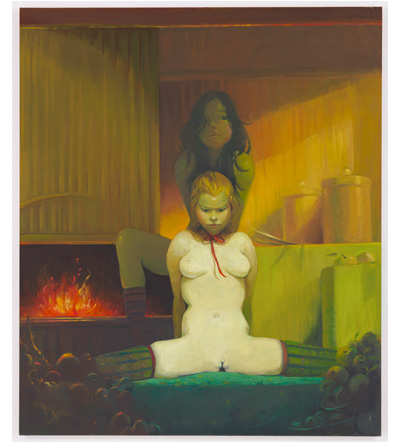
Lisa Yuskavage Fireplace 2010. All images courtesy of David Zwirner
Those visiting David Zwirner’s Chelsea gallery this month will find themselves in the provocative company of a series of lurid, disrobed figures, polished with the curious appearances of feral angels. These cherubic yet licentious effigies feature recurrently in the imagination of Lisa Yuskavage, here in her third solo exhibition with the gallery; feminine forms uncloaked before vivid, polychromatic dreamscapes, depicted in candy-hued, saccharine palettes.
“I have always worked, even as an undergraduate, with the subject of women, because that’s what made sense to me, it was as if I was an actress and that (the subject) was the protagonist that I was working through. Inevitably, people will ask me – when are you going to paint a man? It would be like asking Meryl Streep – when are you going to go in drag?”
Emerging onto the New York arts scene in the late 90s, amongst contemporaries such as John Currin and Elizabeth Peyton, Yuskavage’s brand of feminine lasciviousness has consistently proven to mystify and bemuse, provoke vehement feminist discord and analysis through the prism of gender politics – yet, the paintings remain products of distinctly personal realms; intrinsic psychological divulgences,

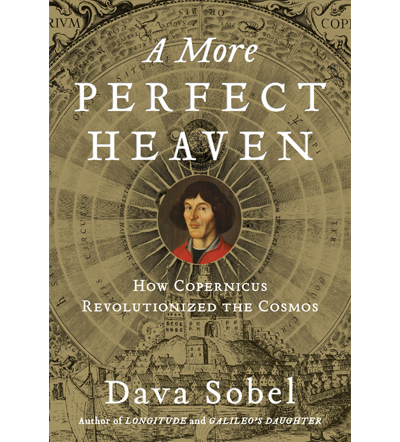
![]()
With the printing of On the Revolutions in 1543, Copernicus didn’t so much set the world on fire as he did set it spinning. But there were those in his time, not quite ready to receive his pioneering theories about the cosmos, who, had he lived longer, may have wished to see the astronomer himself set ablaze (à la Giordano Bruno). In her new book, A More Perfect Heaven, Dava Sobel tells of the universe-altering ideas that Copernicus put forth and the high stakes that nearly kept him from sharing his life’s work.
Breakthroughs in science ask us to imagine the unimaginable. And in 16th Century Europe, the notion of a heliocentric solar system wasn’t merely unimaginable, it was downright heretical. The conflict at the center of Sobel’s book is the decision that Copernicus had to make of whether to publish his discoveries and risk whatever reaction they might provoke. For the first time, Sobel, a science writer, also serves as playwright for a portion of the book and dramatizes the conversations that Copernicus had with Georg Joachim Rheticus, the Lutheran mathematician who ultimately convinced him to make his theories known. PLANET spoke to the author about bringing characters in scientific history to life for real this time:


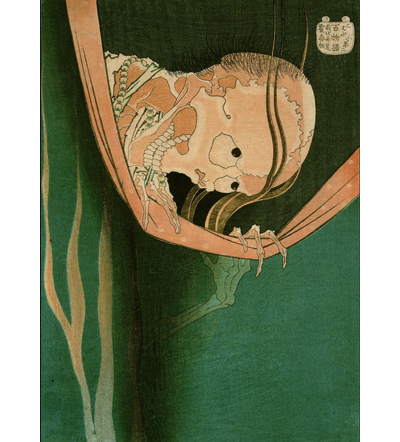
Hokusai, Kohada Koheiji, © Katsushika Hokusai Museum of Art
The late-Edo period master Hokusai left two artistic legacies: one in Japan as a preeminent innovator in the ukiyo-e style, and one in Europe as an icon of the hugely influential japonisme movement. Hokusai’s century-straddling career as a painter, printmaker, and illustrator is the subject of Hokusai, the artist’s first major retrospective in Germany, at the Martin-Gropius-Bau Berlin through October 31st.
Ukiyo-e, or “floating world” imagery, was an immensely popular style of genre painting in Japan by the late 1770s, when Hokusai was beginning his career in Tokyo. Though skilled in the detailing and attentive characterization required of the atmospheric ukiyo-e, he almost immediately moved beyond its traditional subject matter of urban revelry. In applying ukiyo-e’s ephemeral technique to the natural world, Hokusai expanded the genre to include expressive landscapes, seascapes, and closely observed studies of plants, and produced some of Japan’s most famous woodblock prints in the process.
Click for Slideshow

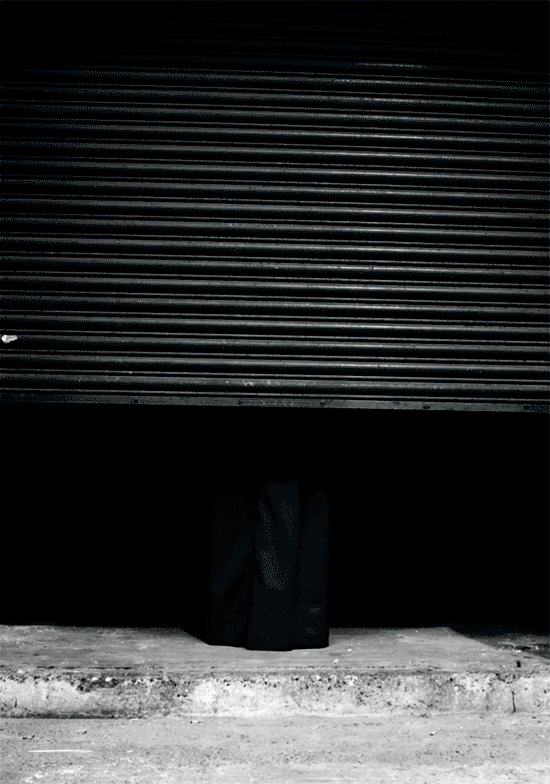
Image by Mikael Johansson
Newcomer Ellinor Malmgren’s aesthetic often gets called a certain 4-letter word typical of fashion designers who privilege risk over playing it safe: bold. The word seems appropriate enough given the types of materials Malmgren selects for her pieces, like stretch-infused leather and razor-thin metal –– and the very exacting color palette she insists they be (think deep Prussian blue, stark charcoal, and matte gold); if you factor in the extravagant silhouettes taking shape from her imagination, the word seems practically tailor-made.
The result of such “bold” thinking is a strangely-alluring debut collection that reads equal parts confident and mysterious, slightly futuristic – with a healthy subversive streak hell-bent on dismissing the standard notion of hourglass femininity – rather than yielding to it. Jackets with distorted shoulders and hip pockets wide like hula hoops aren’t exactly synonymous with ladylike style; here, they possess a strong appeal in spite of this (or perhaps because of it). Effortless comes in with what’s intentionally left out: ornamentation. It’s not that detail doesn’t interest Malmgren (her cage-like metal cuffs and neck pieces offer proof); it’s simply that communicating her point of view comes at its most natural when relayed through form rather than content.


Jonas amid his personal archives. Photography by Derek Peck
From my regular column in AnOther magazine.
Jonas Mekas is a man who clearly loves a good archive. Besides being a filmmaker, artist, writer and poet, Mekas is probably the most dedicated and genre-conscious pack rat in New York City. Over the last forty years he’s become widely known for being a co-founder and chief guardian of the Anthology Film Archive, the largest collection of underground and experimental film in the world. So it shouldn’t have been a surprise when I arrived at his Brooklyn loft the other week and discovered the entire space filled with loosely stacked boxes, folders, photographs, glassines and slides of cut film reels, writings, poems, magazines, posters, and so on. They covered every available surface. Books and binders lined the walls. Nothing was overly fastidious or ordered – in fact, the stacks were actually rather loosely assembled – but there was nothing messy either. And Jonas knew exactly where everything was. At first, I was confused. I thought perhaps he was housing a portion of the Anthology Film Archives in his own living room. But he assured me he wasn’t. This was his own work, he said, a lifetime of thought and creativity and its artifacts. The next logical thought that came to mind was, How did he live here? There seemed to be no place to relax, recline, or spread out a big feast for family and friends. There was nowhere to not work. But after only a few minutes visiting I realised this is how he lives. Mekas is so consumed with the art of documenting life and collecting its leftovers that it has become entirely second nature to him, as automatic as breathing air.



Paul Cadmus, 1928, by Luigi Lucioni (American, 1900–1988)
Thanks to popular television shows like HBO’s Boardwalk Empire and Ken Burns’ new PBS documentary series Prohibition, we’re well informed about what went on socially and politically in the 1920s, from the rise of the Mafia to the new freedoms women enjoyed as voters and flappers. But what about visual art? What did painters, sculptors and photographers produce during the ten years between the Great War and the Great Depression?
Youth and Beauty (Skira Rizzoli), a beautiful coffee-table book accompanying an exhibition opening at the Brooklyn Museum in October, gives plentiful answers to that question. Of course, we know what happened artistically in postwar Europe: it was the Golden Age of Modernism, when artists like Picasso, Mondrian and Kandinsky were producing some of their best work. Newly mature, Modernism bore its own wild children–Dada, Surrealism and Futurism among them.


![]()
When Jeff Nichols’ Shotgun Stories was released in early 2008, critics and civilians alike embraced the young filmmaker’s tense, tragic tale of a feud between two sets of half-brothers. Heading the solid, mostly unknown cast was Michael Shannon, who’d previously given an awesomely unhinged performance in William Friedkin’s psychological thriller ‘Bug.’
Nichols’ current film, Take Shelter, which opens this Friday, also stars Shannon, this time as Curtis, a husband and father whose nightmarish visions of an apocalyptic storm leave both character and audience questioning his sanity. The visually and emotionally intense film won the Critics’ Prize at Cannes and was a Grand Jury Prize nominee at Sundance.
Take Shelter has a lot in common with Nichols’ debut – spare dialogue, heartland setting, strong family theme, and a solid cast (Jessica Chastain plays Curtis’ wife). But just as Shannon has gained visibility since his scene-stealing (and Oscar-nominated) turn as a troubled neighbor in Sam Mendes’ Revolutionary Road, Nichols himself has become sought after. His next movie, Mud, about two teens who find a fugitive on the Mississippi River, stars Matthew McConaughey and Reese Witherspoon.
PLANET spoke with Nichols during pre-production for Mud, currently being shot in his home state of Arkansas.


![]()
Beauty and creativity can emerge in even the thorniest economy, as manifested by BOFFO Building Fashion, an exciting series where architects and fashion designers collaborate to create pop-up shops. With the support of CFDA, Supima Cotton and Architizer, Building Fashion had a successful premiere in 2010 at HL23 underneath the High Line. This year, Building Fashion will feature five installments and take place at Karkula, located at 50 Walker Street in Tribeca.
A designer’s work is oftentimes presented in a department store or boutique alongside dozens of collections. Building Fashion, however, gives designers the opportunity have their own freestanding store as well as a space that reflects their personalities. According to Nicola Formichetti, the first designer to be featured in the series, “This is the opportunity to look directly into my head.” Nicola’s, by Gage/Clemenceau Architects, literally reflects Formichetti’s style, with mirrored prisms serving as the ceiling and walls.






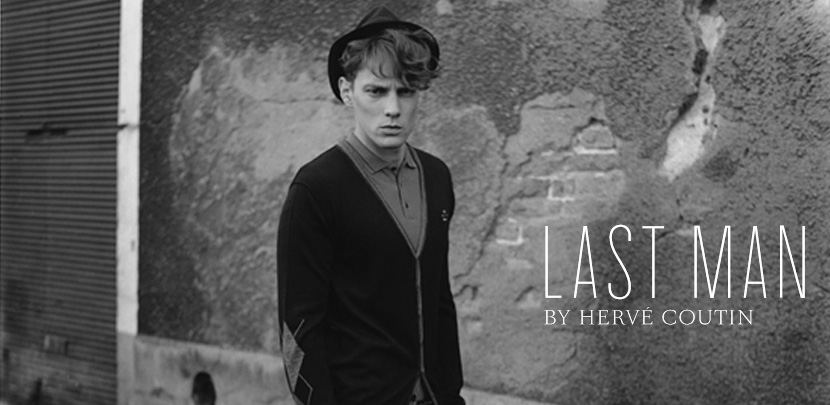
 Facebook
Facebook Permalink
Permalink Digg
Digg Reddit
Reddit LinkedIn
LinkedIn StumbleUpon
StumbleUpon Tumblr
Tumblr

